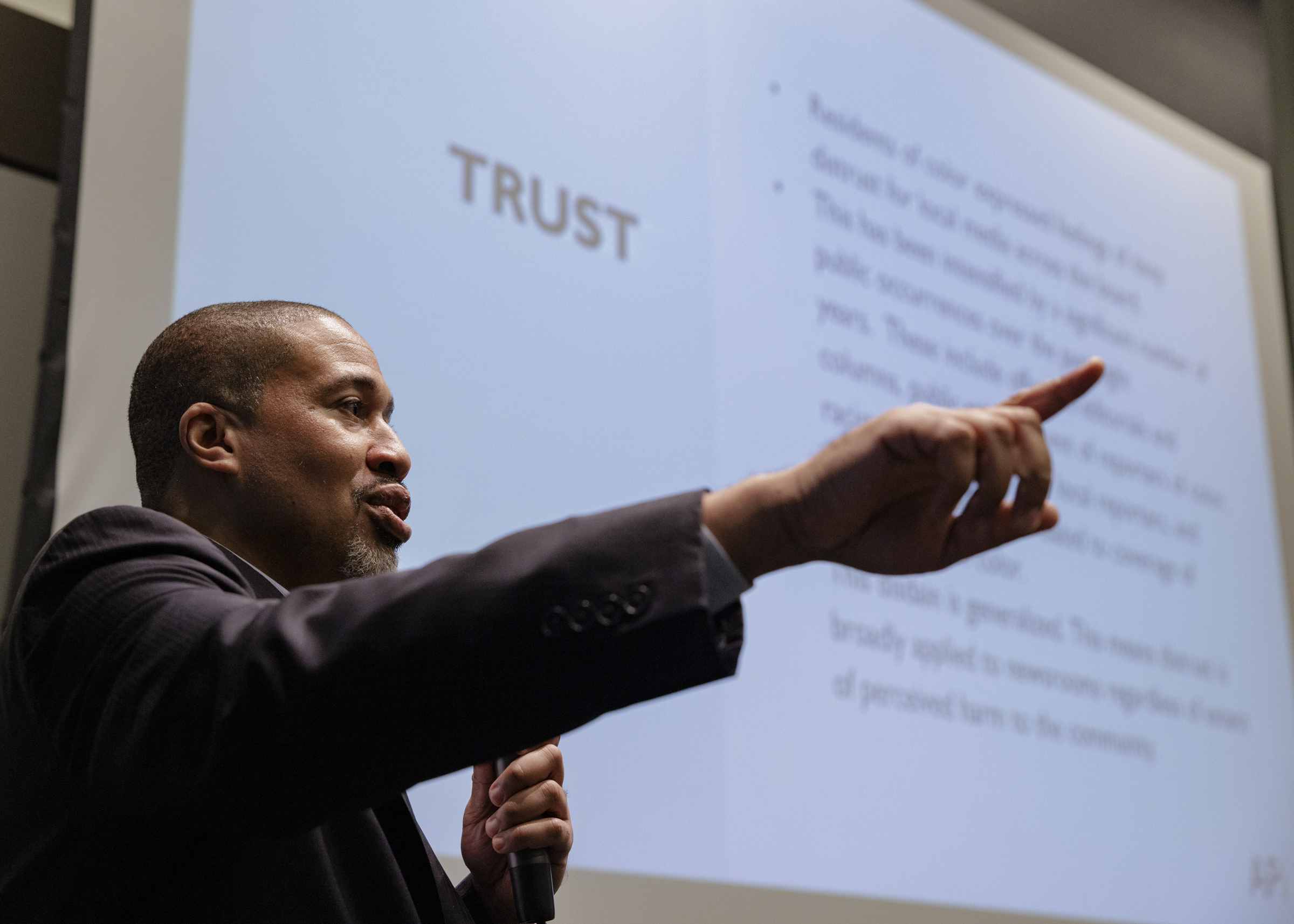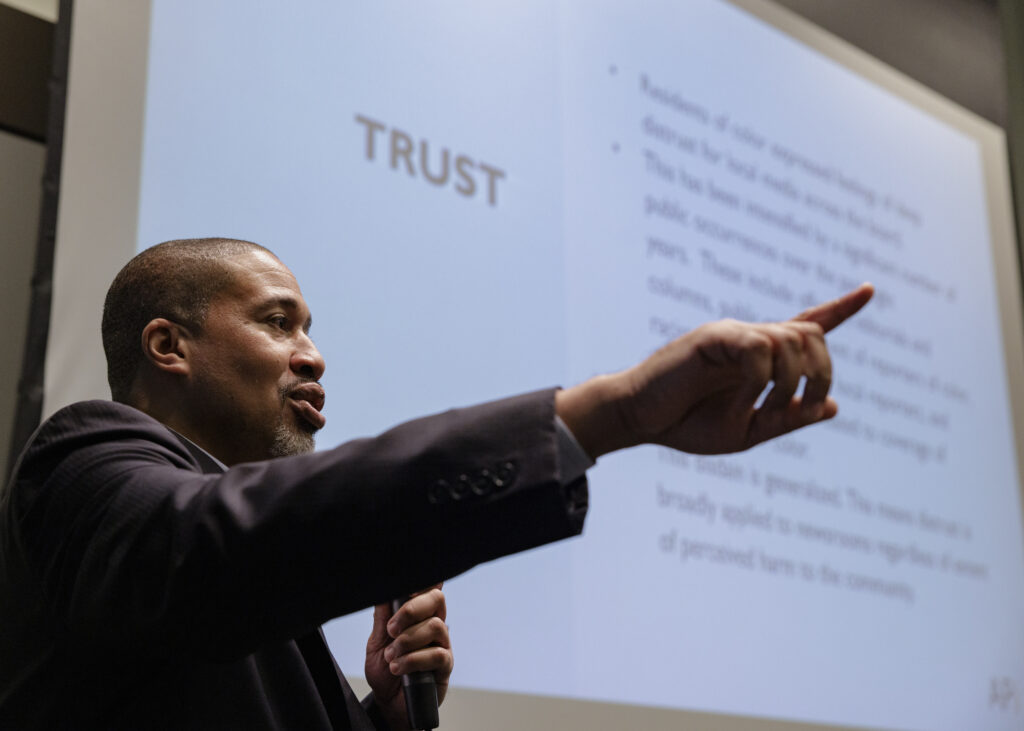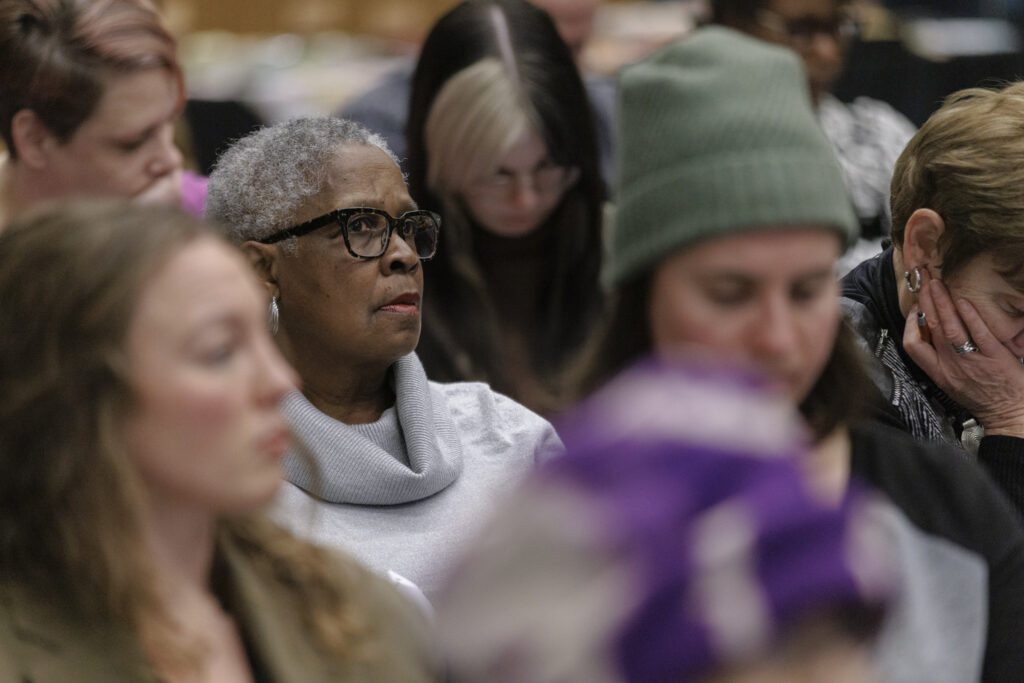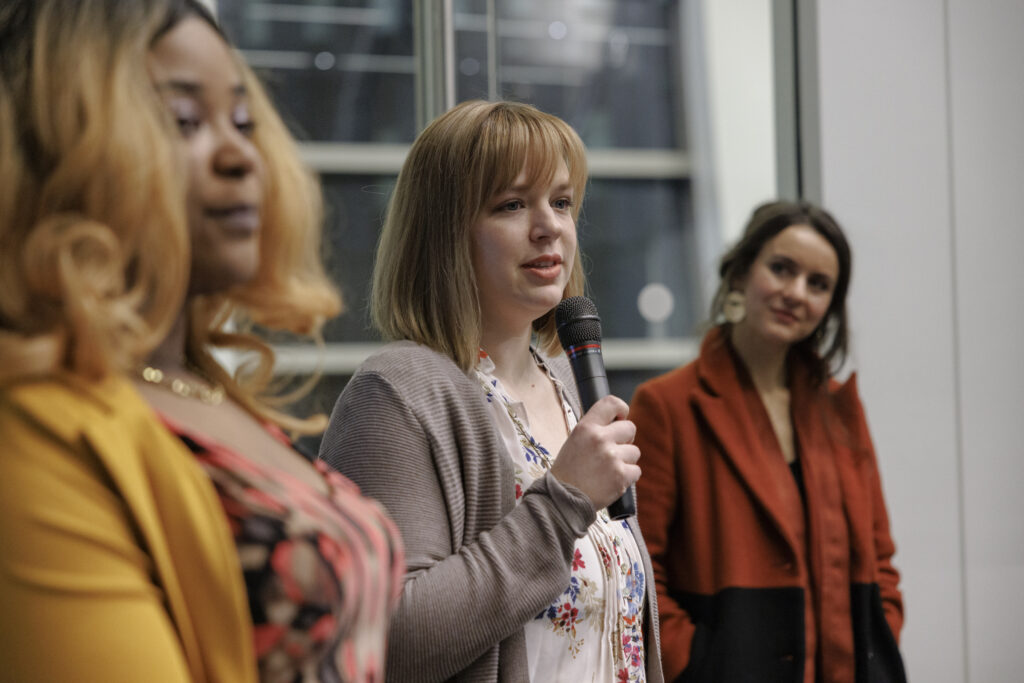
In the spring of 2022, the American Press Institute introduced its Inclusion Index, under the direction of Letrell Crittenden, Ph.D., director of inclusion and audience growth. One of the first applications of the Index was launched in Pittsburgh, where API worked with the Pittsburgh Black Media Federation and five news organizations in the metropolitan region to assess and improve how multiple news organizations in a single area cover communities of color.
The collaboration was based on the idea that news organizations in an ecosystem can work together to address gaps in their journalism that have left communities of color inaccurately represented or overlooked altogether in coverage. While newsrooms don’t always collaborate on news — indeed, they often deliberately compete with one another — they need to understand that communities often view the media as a collective. That perception of “the media” as monolithic means it is critical that news organizations assess how they serve communities of color not only on an individual basis, but collectively as well. Realizing that need, the five Pittsburgh newsrooms in this cohort generously agreed to participate in this project as a way to better understand the ecosystem in which they operate, to address gaps in that coverage and to position themselves to better represent their audiences.
What follows is a summary of that work, starting with the cohort’s inclusion scores and ending with recommendations for effective ways they can work as a whole to improve the Pittsburgh media ecosystem.
Inclusion Index Scores and Highlights
Evaluation of Pittsburgh media, with an emphasis on cohort participants, using API’s Inclusion Index.
Diversity – 2.5
- While there has been some movement, newsrooms indicated that diversity within newsrooms has not reached parity (36%) with the diverse population of Pittsburgh, although they are collectively close to parity with Allegheny County (22%).
- Some newsrooms have innovative diversity initiatives to recruit local talent.
- Newsrooms have made an effort to recruit diverse interns.
- Newsrooms could use more formalized plans for recruitment.
- Retention is an issue, as journalists of color often leave local newsrooms after a few years.
Inclusion – 1.5
- Pittsburgh newsrooms have had struggles related to internal culture, some that have erupted into high-profile public disputes.
- Issues include wage concerns, burnout and a lack of mentorship opportunities.
- Newsrooms should consider developing more formal policies geared toward helping newsroom workers thrive within their current positions. This includes opportunities for specialized training programs and more mentorship opportunities.
Representation – 2.0
- Pittsburgh newsrooms have long struggled with fair and equal representation of African Americans, as noted by two separate studies conducted and released by the Heinz Endowments in 2011 and 2020.
- Local residents of color expressed concerns that they do not feel their communities are accurately and adequately represented on a regular basis by local media.
- Some newsrooms, however, have made an effort to do more to highlight communities of color via special sections. This is a start, but we feel these efforts should extend beyond specialized coverage.
Engagement – 1.5
- Pittsburgh newsrooms, in most cases, lack formal community engagement teams utilized by many newsrooms across the nation.
- Engagement also does not take place routinely outside of the story gathering process.
- Local residents expressed a desire to have more direct engagement with local media on a routine basis.
Trust – 1.0
- Residents of color expressed feelings of deep distrust for local media across the board.
- This has been intensified by a significant number of public occurrences over the past eight years. These include offensive editorials and columns, public mistreatment of reporters of color, racist statements made by local reporters and questionable decisions related to coverage of communities of color.
- This disdain is generalized. This means distrust is broadly applied to newsrooms regardless of extent of perceived harm to the community.
Assets – 1.0
- Asset mapping is a more complex tool used to understand communities. For our purposes, it is a process of understanding and tracking the key influencers, organizations and sites of communication within a community. It is not often deployed by newsrooms. But due to the lack of source tracking and engagement, there is little evidence that precursory work toward asset mapping is in place.
Summary
– another local Black resident to members of Pittsburgh media, November 2022.
The Pittsburgh news media ecosystem has significant deficiencies when it comes to inclusive practices both inside and outside of the newsroom. The failure of the ecosystem to progress in this area is especially disappointing, given that this issue specific to Pittsburgh newsrooms has been well publicized over the past decade. Nevertheless, the willingness of the five newsrooms in this cohort to participate in such a critique is a first step toward change. Additionally, each newsroom has implemented some policies that, if expanded upon or adopted by other newsrooms, could provide the basis for larger transformations related to Diversity, Equity, Inclusion and Belonging, or DEIB, in journalism. The American Press Institute hopes that overcoming these challenges will be done not only on an individual basis by newsrooms, but as a collaborative effort, especially when it comes to creating a hiring pipeline and improving efforts to listen to and engage communities of color.
Sign up to get future updates on API’s Inclusion Index and DEIB work. Download the full report here.
Share with your network
You also might be interested in:
It’s been a busy year for us: we held three API Local News Summits, built out a comprehensive guide to partnering with influencers, encouraged experiments with grants and cohorts, and supported news organizations with our products.
Today, we’re undergoing a bold transformation — reimagining ourselves as a platform that fosters generational solidarity and serves bicultural audiences from Gen Z to Boomers.
As director of inclusion and audience growth, Harris-Taylor will continue API’s efforts to drive organizational and cultural transformation while sharpening its commitment to diversity, equity, inclusion and belonging. She’ll also work to deepen API’s partnerships with community organizations and non-news experts.








